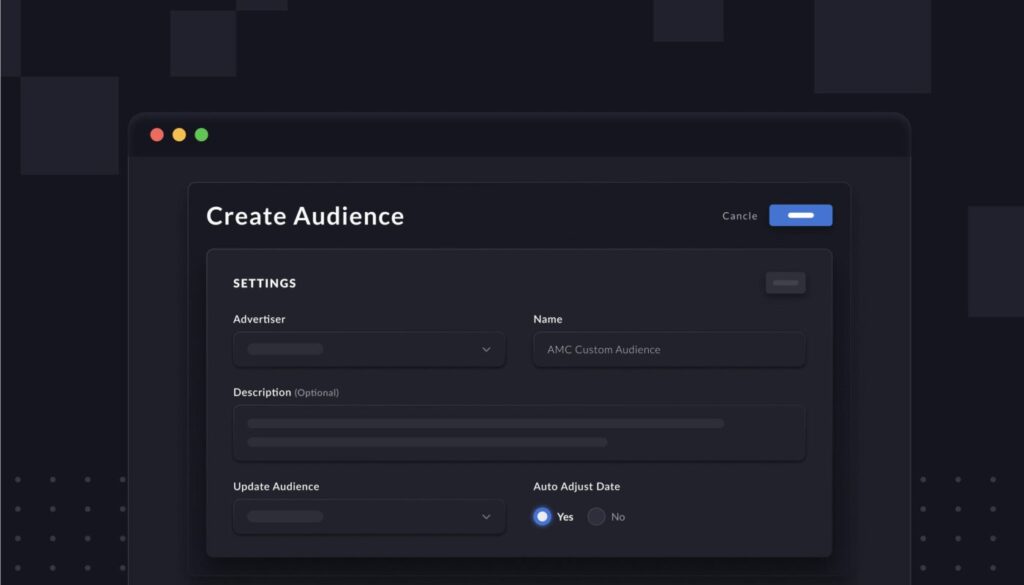Too often, Amazon Marketing Cloud is mistaken as solely a tool for DSP ads. This makes sense—after all, you need to spend on DSP in order to access AMC.
But there is a vast opportunity for AMC to level up your Sponsored Ads. Even if you run DSP ads, you probably devote the majority of your spend to Sponsored Ads anyway.
AMC can level up not just your DSP, but your Sponsored Ads too.
Here are three use cases you shouldn’t miss.
#1: The New-To-Brand bonanza
AMC is the only way you can get full New-To-Brand data for your Sponsored Ads and for your individual ASINs.
In the Amazon console, Sponsored Products ads notably don’t show you New-To-Brand data—but you can get that NTB data in AMC.
You can also see NTB data on the ASIN level in AMC. That means you can quickly figure out which ASINs drive the highest and lowest share of your incremental shoppers.
Knowing your NTB gateway ASINs might lead you to reshuffle your Sponsored Ads strategy. You might find that the product with the highest NTB rates is actually not one of your top sellers.
Maybe it is stuck somewhere in the middle of the list—but now, you realize it’s actually your magic bullet to bringing in new customers. The natural next step would be to ramp up your Sponsored Ads spend on that high-NTB product, especially on non-brand terms.
If you know that you’re sitting on a product that’s a magnet for new shoppers, then you want it to appear as high as you can in non-brand searches. That will give a corresponding boost to your non-brand campaigns.
By contrast, let’s say you have a product with a really low NTB rate. You might want to take the time to figure out why it’s not drawing in new customers. Is there something in your messaging or images that is confusing shoppers?
#2: Calculate your customer acquisition costs
Understanding how much you’re spending on every new customer who converts is essential for understanding if your ad spend is truly paying for itself.
Unfortunately, you can’t just look at the spend on the ad that ultimately led to the conversion. Many of your shoppers are probably seeing multiple of your ads before they convert. You might sometimes be spending on 2, 3, or 4 ads before getting that conversion.
You can’t normally see that data—unless you use AMC.
Because AMC lets you track your shopper path to conversion, you’ll get a look at how your Sponsored Ads are working in tandem to convert a sale.
How many ads does the typical shopper see before converting? How much are you spending on those ads? And does it vary from product to product?
You can answer all of those questions with AMC, and come back with a number, broken down by ASIN, of how much you actually spend on Amazon ads to acquire each shopper.
Pair that customer acquisition cost with your product’s Customer Life-Time Value, which you can also unlock in AMC, and you’ll have a snapshot of just how healthy your business is.
Is your customer acquisition cost for all of your products much lower than your customer LTV? Then great, you’re running a strong business.
Is your CAC close to even with your LTV? Then you might have a problem.
#3: See if certain ads are stealing credit for sales
Typically, Amazon runs on a last-touch attribution system, which means that only the last ad a shopper saw before converting gets credit for a sale.
This can sometimes be a problem, as we discussed with VCPM attribution on Sponsored Display ads.
Because SD ads show up on product pages, they might get falsely credited with a sale that was going to happen anyway.
That inflates the metrics on your SD ads, while making the ad campaigns that actually did the heavy lifting in converting your shopper seem less impressive.
AMC lets you get out of the last-touch attribution rabbithole.
You can, for instance, set all your ads to a linear touch attribution system, which assigns equal credit to each ad a customer saw on their journey.
So let’s say your shopper saw two ads before converting, a SP and a SD ad. With last touch, SP gets 0% credit and SD gets 100%. With linear touch, by contrast, each campaign gets 50% of the credit.
Linear-touch attribution can quell any of your fears about certain ads getting too much credit for sales. You can see exactly which campaigns are part of a successful shopper journey, even if they show up earlier in the process.
It also helps you get smarter with your remarketing. Which ads work best on shoppers who’ve already interacted with at least one of your ads? Are SP ads the best way to seal the deal, or are SD ads?
You can also radically improve your measurement. Most likely, your company spends on non-brand ads on Amazon with the idea that not every conversion is going to happen right away.
With non-brand ads, you are at least starting these customers down the journey with your product. But how do you know if those non-brand ads are really converting people in the long run?
With AMC, you can track how many shoppers first saw your non-brand ad, then later searched your brand keyword.
Basically, you can measure how many successful journeys non-brand ads appeared in—even if your non-brand ads aren’t getting credit for the final sale.
We know this firsthand, for what it’s worth, because we built a query like this for our client Made in Cookware.

![[Amazon search bar] Blog Post_v1 [Amazon search bar] Blog Post_v1](https://www.intentwise.com/blog/wp-content/uploads/elementor/thumbs/Amazon-search-bar-Blog-Post_v1-qtuul4khkzom3a9k6poigge48oqotyp9uae1kswxfk.jpg)





